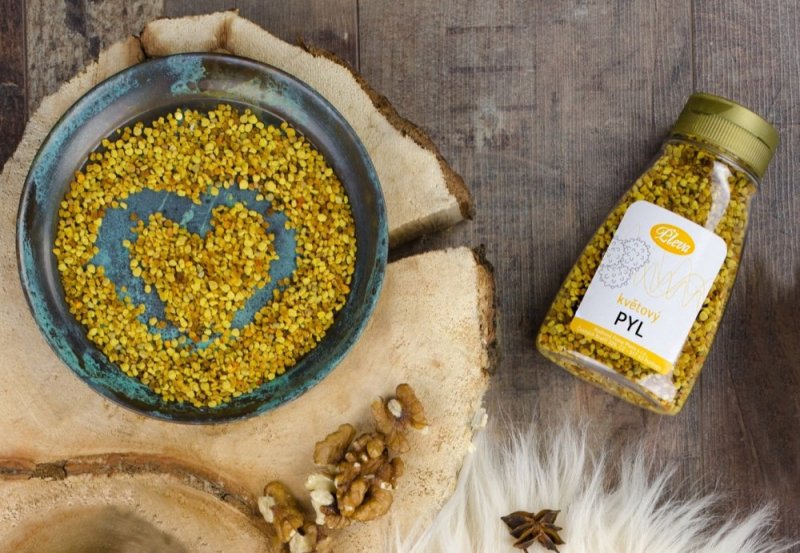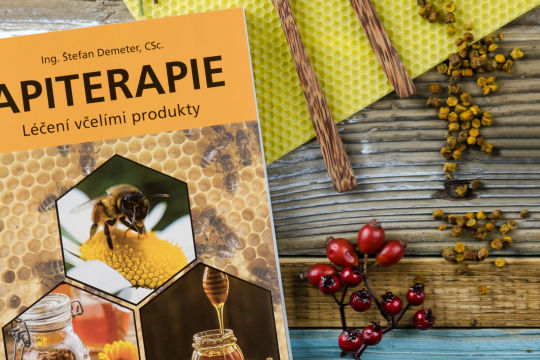Pollen is not just an unpleasant part of spring that drives allergy sufferers out of the countryside. Bee pollen is a unique natural substance. It contains an unrivalled combination of substances that infuses blood into the veins of our entire nature. If bee colonies did not have pollen, they could not survive. And where there are no insects, no other life will last long. In addition to its nutritional value, pollen has many other beneficial effects on the human body.
Pollen is indispensable for bees
Although pollen is classified as a bee product, in fact it is a product of flowering seed plants. These are male sex cells stored in pollen tubes and are used to reproduce plants by transmission of hereditary information through female cells - in the pistil. Its other important role is that it serves as food for small animals. Plants "bribe" insects for food (i.e., pollen) to provide pollination, which ensures the spread of genetic information around the environment and the preservation of the species.
When foraging on flowering plants, pollen is more attractive to the bee than the nectar that makes honey.
Bees would die without pollen. Nurse bees could not produce feeding juice for the brood and nutrition for the queen; pollen is the bees' source of energy for all the work in the hive as well as for the forage of nectar and pollen. Because of its importance to bees, beekeepers also call it "bee bread". It is no coincidence that bees feed the whole hive with pollen.
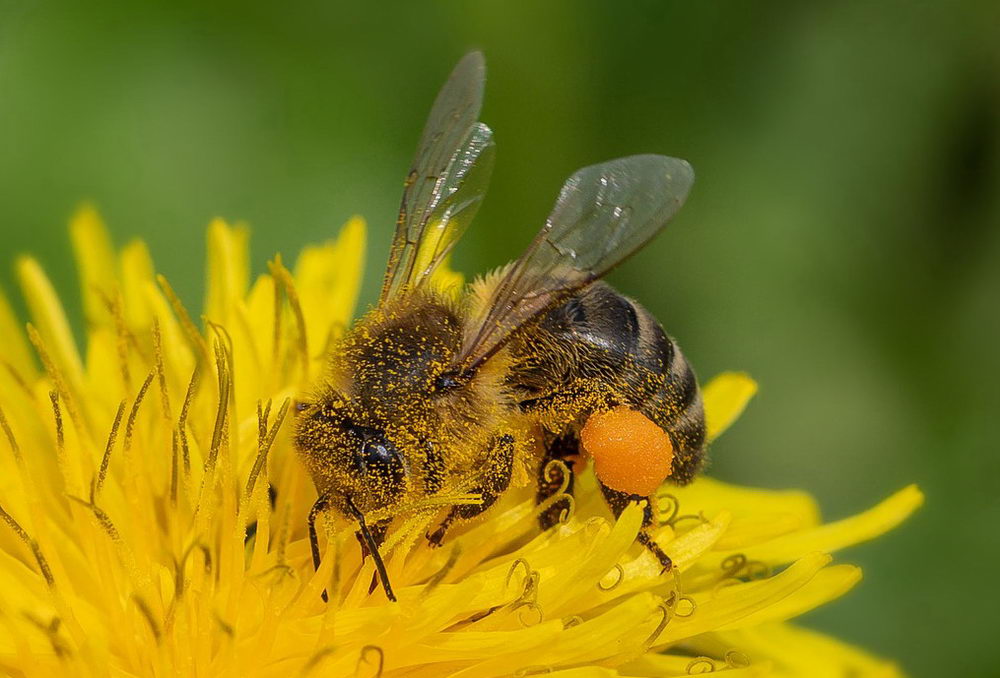
How does a bee collect pollen and how does pollen become a pollen pellet?
A bee flies from flower to flower, picking up tiny grains of pollen on the tree-branched hairs of its fur (scopa). Bees comb them down with the brushes on their legs into so-called baskets, which are on the third pair of legs. They add the content of the honey sac and their glands to the pollen and push it into the basket, forming it into pollen pellets or pollen balls. Those they then carry to the hive, where they drop them using a spike on the second pair of legs.
After arriving at the hive, the bee deposits pollen pellets into individual cells and allows them to be further processed by other bees at the age of 4 to 6 days. They then tamp the pollen with their heads to keep the air out and add the secretions from their glands. At this stage, lactic fermentation begins, during which the protective coating of the pollen grain cracks.
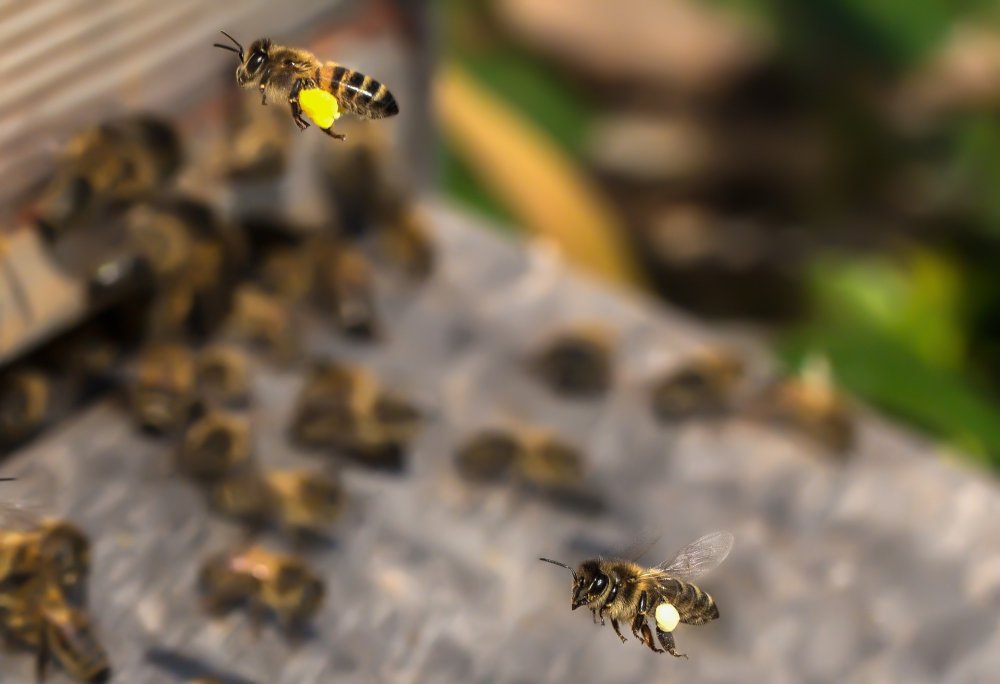
Powdery pollen from flowers is thus gradually transformed into fresh pollen pellets and then to honeycomb pollen - perga. Bees perform this whole demanding chain so that pollen is well preserved and lasts a long time. It is essential for the survival of the whole bee colony.
A bee flies out 4 - 6 times a day, it gathers a few pollen pellets in 20 - 80 minutes. Both pollen pellets weigh 8-25 mg and contain an incredible 3-4 million pollen grains. Just to give an idea: An apple blossom has around 100,000 pollen grains, a single hazel or birch needle 5 million and a male corn inflorescence even 50 million pollen grains. One honeycomb cell of pollen is enough to raise two young adult worker bees (house bees) and during the spring a bee colony consumes about 5 to 6 kg of pollen.
Types of bee pollen
You will often see the term flower pollen - but this term is general. Flower pollen is divided into two main types, which we have already mentioned above, namely fresh pollen and Perga pollen (Beebread).
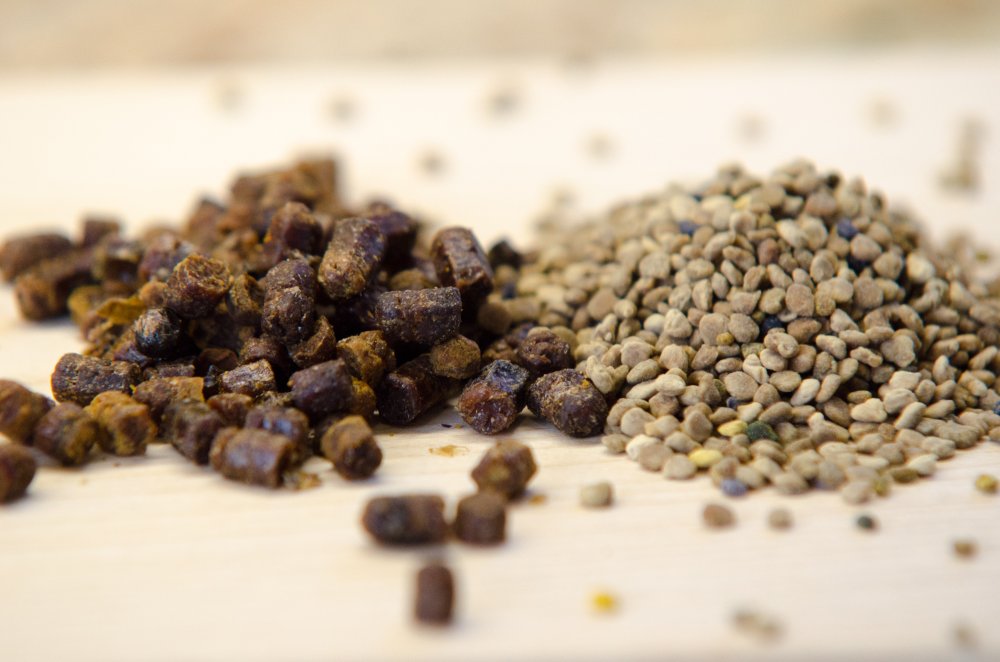
Perga pollen on the left, fresh pollen on the right
Perga is originally a Russian term and means honeycomb pollen. It differs from fresh pollen in that it has already undergone fermentation in the hive and is therefore easier to digest and, according to expert studies, does not cause allergic reactions. This is also why perga is more expensive.
Pollen vs. bee pollen
The difference between free airborne pollen in nature and fresh (pollen pellets) or honeycomb pollen (perga) is that the former is a potential allergen for humans, while both fresh and honeycomb pollen are highly valuable medicinal products and food supplements on a natural basis.9
How pollen is harvested and processed
Fresh pollen is processed as follows: For the harvesting of fresh pollen, the beekeeper must have specially adapted hives in which the so-called pollen trap is located. It consists of a collection container and a star-shaped grid. The beekeeper places the pollen trap behind the entrance to the hive, so that each bee must pass through it. In doing so, it plucks off a pollen pellet, which falls into the collection container. The containers are emptied daily, and trapped pollen is then dried and cleaned with air at 40 °C. Because it is hydroscopic, i.e., absorbs air moisture, it contains approximately 20% water immediately after harvesting.
It is very funny to watch how bees are inventive and gradually learn how to deliver through the pollen trap as many pollen pellets as possible. It also shows how much they value pollen.
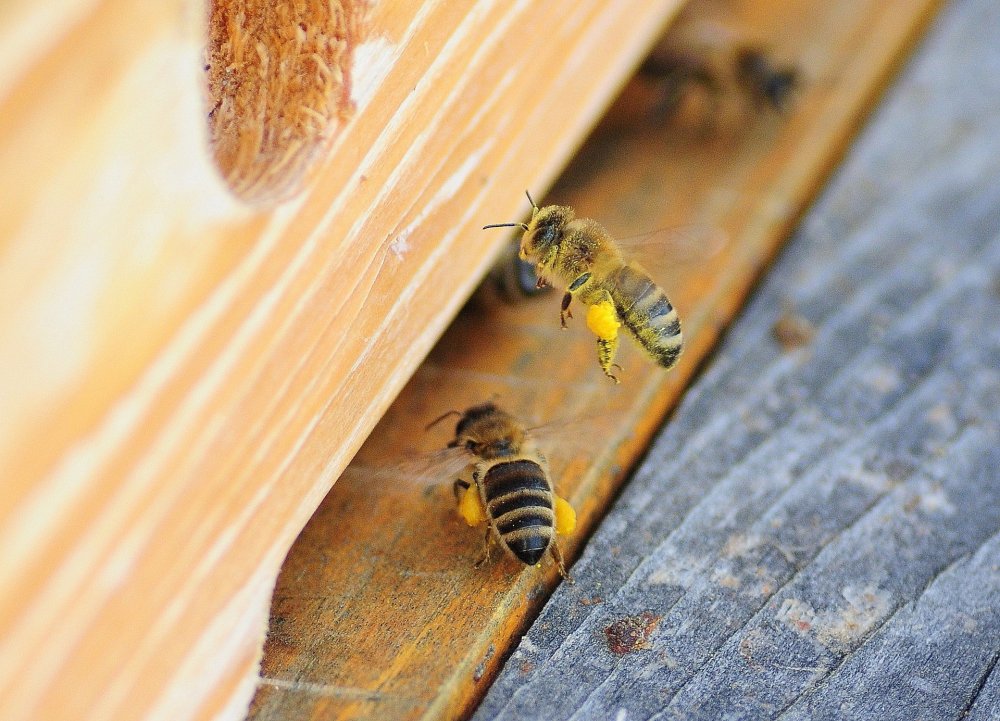
It is much more difficult to collect perga pollen and two methods are used for this:
-
The first one is done with a so-called pollen picker, which is a tube with the diameter of a bee cell, with a wire inside. The picker is inserted into the pollen cell to the very bottom, then pulled out with the pollen, which is then pushed into the collection container using a wire.
-
The second option is simpler, but it can only be used for honeycombs in which the brood has not yet hatched. Such honeycombs can be put in a freezer - after freezing, the wax honeycomb becomes very fragile, easily crushed and pollen just needs to be collected.
One bee colony can consume 25 to 40 kg of pollen per year. This is transported to the hive by young bees aged 15 to 17 days. These bees can collect pollen only for a few weeks. Then their wings become worn out and they die from exhaustion. A single bee can collect only 30 to 50 mg of pollen per day, so collecting over 25 kg is truly a challenging process.
And another interesting fact: neither queen nor drones are able to digest pollen, and it is therefore supplied to them by the house bees (young adult worker bees) in royal jelly or feeding juice.
Pollen as a cocktail of substances
In addition to its nutritional value, pollen has many other beneficial effects on the human body. And its composition is still not precisely known, and research may yet reveal much.
V knize Apitherapy - treatment of bee products by Dipl. Eng. Štefan Demeter (Czech publication), we can learn that pollen is considered a natural multivitamin. "We can confirm that pollen contains all the elements necessary and beneficial for human body. After a short time, the use of pollen induces a feeling of health and satisfaction, therefore, it is recommended for convalescents after severe illnesses, surgeries, and increased psychological stress and traumas. Older people maintain their physical and mental fitness and good memory into old age thanks to the use of pollen."1
Složení pylu:
Pollen is composed of large amounts of proteins, free amino acids, nucleic acids, minerals, vitamins, sugars, fats, organic acids, enzymes, fragrance and flavour compounds, phytoncides (antibiotics) and water. Enzymes are an important part of pollen and are represented by pepsin, trypsin, erepsin, amylase, invertase, reductase, pectinase, cozymase, catalase, and phosphatase. Among minerals, pollen contains sodium, potassium, phosphorus, calcium, magnesium, iron, chlorine, sulphur, copper, cobalt, silicon, and traces of selenium. Pollen has 5 to 7 times more amino acids than beef, eggs, or cheese. Among the vitamins, in pollen we find provitamin A, vitamin B1, B2, B6, B5, vitamin C, E, and H.2
The specific composition of pollen varies depending on the plant species and depends on the internal and external conditions of the plant as well and is not always the same even for the same plant. However, bees collect less nutritious pollen only when there is a lack of pollen of higher nutritional value. How do we recognize where pollen comes from? Simply - by its colour. White-grey pollen is for example from raspberry and blackberry, light yellow one from elderberry, blue one from blue tansy. The type and age then determine the flavour.
Examples of pollen colours
| pollen colour | spring | pollen colour | summer | pollen colour | late summer |
|
.
|
Common hazel |
.
|
Horse chestnut |
.
|
Opium poppy |
|
.
|
Black alder |
.
|
Common hawthorn |
.
|
Sunflower |
|
.
|
Blackthorn |
.
|
Raspberry, bramble bush |
.
|
Great mullein |
|
.
|
Common pear tree |
.
|
Red clover |
.
|
Blue tansy |
|
.
|
Dandelion |
.
|
European elder |
.
|
Field Scabious |
|
.
|
Domestic apple tree |
.
|
Garden lupin |
.
|
Corn poppy |
Use of pollen:
- Pollen is well used in the prevention and treatment of general exhaustion of the organism, in mental fatigue, has a rejuvenating effect on the cells of human body and thus on the overall appearance of the person.
- It is effective in iron deficiency anaemia, liver diseases - jaundice and cirrhosis, mental anorexia, and general malnutrition.
- In combination with honey and royal jelly, it has beneficial to excellent effects in liver diseases.
- According to the experience of beekeepers, it has a beneficial effect on reducing high blood pressure (harmonizes blood pressure).
- It has beneficial effects in diseases of the prostate gland, its inflammation and enlargement.
- Pollen with honey and royal jelly is used for malnutrition and general physical weakening after surgeries, severe illnesses during convalescence, but also for physical fatigue, and exhaustion.
- It has favourable effects in various neuralgias and back pain because it contains all the components of vitamin B.
- According to physicians in Basel, hay fever is successfully treated with pollen. It should be started 6 weeks before the expected onset of hay fever. In our country, it is called the "Candlemas recipe", because pollen starts to be used on Candlemas, i.e., on February 2. On the first day 1 grain is taken, on the second day 2, on the third day 3 and so on gradually up to a weight of 15 g per day. If an adverse effect occurs, use should be discontinued immediately.
- It is an ideal dietary food supplement for diabetics.
- Normalizes the activity of the digestive tract.
- Tones the activity of the nervous and hormonal system.
- Cures acute urinary tract infections.
- Has a beneficial effect on the pancreas.
- Has a mildly laxative and diuretic effect, removes toxic metabolites from the body.
- Treats pulmonary and infectious jaundice.
- Calms the nervous system, brings restful sleep.
- Cures eczema and rashes, anaemia, gallbladder diseases, heart muscle diseases, rheumatic diseases, kidney stones, silicosis of the lungs.
- Has anti-bacterial effects.
- Significantly reduces levels of cholesterol.
- Has a beneficial effect on red blood cells.
- Has a positive effect on replenishing energy and encouraging endurance, improving concentration, and is also recommended for people suffering from mental instability and irritability.
- Adds appetite.
- Increases potency and fertility.
- Relieves problems with headaches or heart palpitations.
- Has an excellent effect in the treatment of colds, flu, and viral diseases.
- Is a wonderful adjunct to antibiotic treatment.
- Regulates the overall activity of the internal organs.
- Dissolves deposits inside veins and arteries. It is necessary to start with caution in the therapy of "decalcification" of veins and arteries, because even a single ingestion of one tablespoon of pollen can release a quantity of deposits that can cause blockage of blood vessels.3
Use of pollen in cosmetics
Pollen also finds use in cosmetics, supporting hair and nail growth, and is recommended for brittle and cracking skin.4 It is added to dry shampoos, skin treatment creams, toning alcohol solutions, and is also used in facial masks. For example, you can try this: mix one teaspoon of ground pollen with a fresh egg yolk. Apply the mixture to the skin, massage lightly, and leave it on for at least half an hour. The skin is supple, well supplied with blood, and elastic after application of this mask. 5Such cosmetic products were used for beauty by the women of Egypt and ancient Rome.
How to use bee pollen?
Pollen can be consumed classically by the spoon without the need for any preparation. You can drink it with still water or cold tea. Alternatively, dissolve in milk, fruit juices, or porridge of oat flakes, stir into yoghurt, marmalade, quark, smoothies, or honey. However, it should not be added to any cooked dishes, as it quickly loses its vitamins. Its use is then expressly prohibited in kidney diseases, cancer, and the first 3 months of pregnancy.
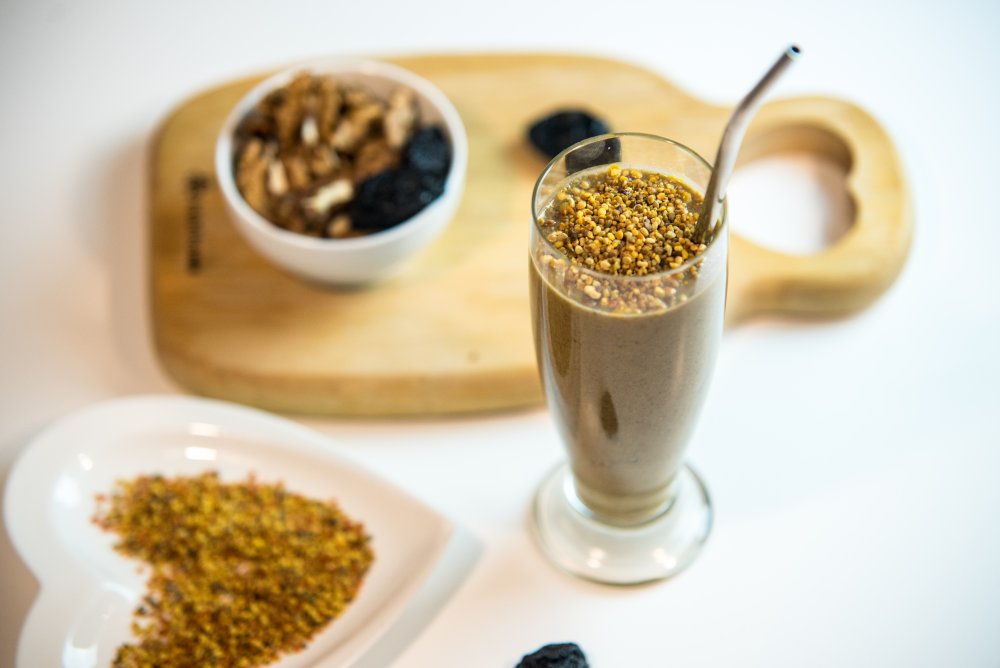
Pollen may be used long-term and may be taken even by children. The recommended dose of bee pollen is 20 g per day. A maintenance dose, or if you are taking bee pollen as a preventive measure, half a dose (i.e., about 10 g) is sufficient, just like for children. Treat yourself to pollen several times a year and take it regularly for 30 days.6 Start on small doses of a few grains of fresh bee pollen, especially if you suffer from pollen allergies. Gradually add bee pollen until the amount of grains corresponds to the recommended dose. Although allergic reactions occur rarely when administered orally, if adverse effects occur during use, discontinue the use. If you suffer from low blood pressure, it is ideal to take pollen at night.
Good preventive and therapeutic results can be achieved by using pollen with honey. It is recommended to enrich honey with 5% pollen and take 1 to 2 teaspoons in the morning and evening. Daily use of pollen with honey after a short time will noticeably improve the overall condition of the organism. The high content of proteins, free amino acids, mineral and hormonal substances in the pollen has a regenerative effect on the cells in our body.7
If you suffer from pollen allergy, try the above mentioned (in the list of pollen uses) Candlemas recipe, used in the treatment of hay fever. This pollen therapy consists in desensitizing the body. If a person allergic to pollen regularly uses pollen or flower honey containing pollen grains during the winter months, the symptoms of pollen allergy will diminish over time and sometimes disappear completely. Pollen grains enter a human body not through the respiratory organs, which are very sensitive to pollen, but from the digestive tract. So, they will elicit a response, however small, in the sense of antibody production. Pollen and honey should come from the patient's surroundings, as it contains allergens that cause hay fever.8
Beekeepers' secret: fermented bee pollen
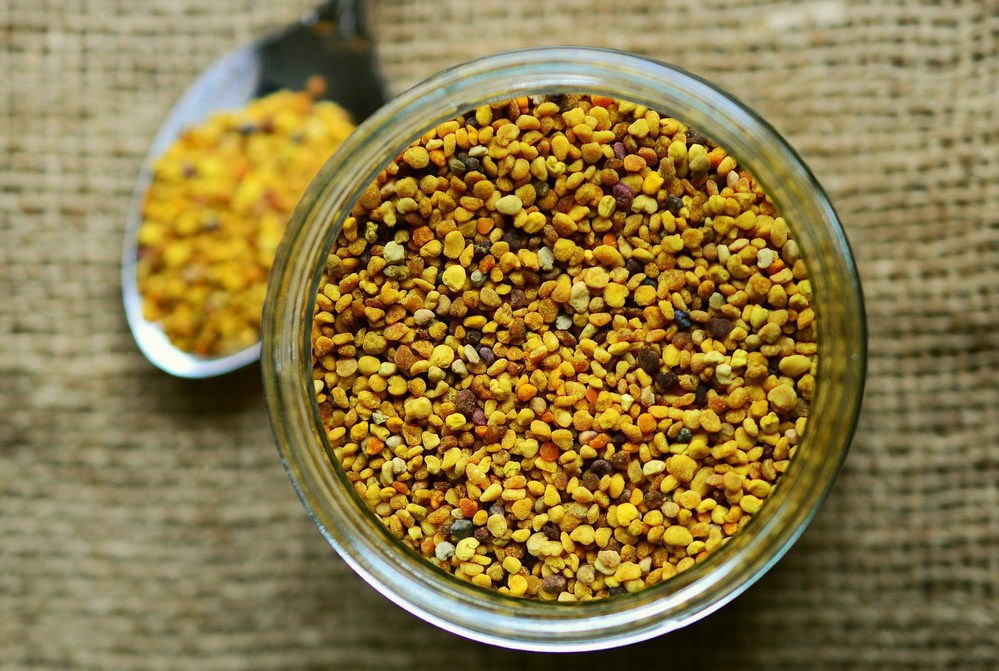
It is recommended to let bee pollen ferment for better digestibility. The recipe is easy:
Boil 40 ml of water and blend with 25 g of honey and 100 g of bee pollen. Stir thoroughly and pour into an open glass. Leave this at room temperature for about 3 days. Then, you can consume the fermented bee pollen. However, on the fourth day it cannot remain at room temperature because it needs the cooler environment of a pantry or fridge. Consume bee pollen ideally half an hour before a meal.
Caution: Perga pollen has already gone through the fermentation process directly in the hive, so you do not have to repeat it again.
1 Ing. Štefan Demeter, CSc.: Apiterapie: Léčení včelími produkty; Jaroslav Čadra, Olomouc, 2021, p. 72 Back
2 Eva Exnerová: bakalářská práce Význam včelích produktů pro člověka, jejich původ adostupnost v Mladé Boleslavi a okolí; Hradec Králové 2015, Univerzita Hradec Králové, Přírodovědecká fakulta,Biologická katedra; p. 31 Back
3 Ing. Štefan Demeter, CSc.: Apiterapie: Léčení včelími produkty; Jaroslav Čadra, Olomouc, 2021, p. 73 Back
4 Marie Kubalová: bakalářská práce Včelí produkty v kosmetice; 2013, Univerzita Tomáše Bati ve Zlíně, Fakulta technologická; p. 32 Back
5 Eva Exnerová: bakalářská práce Význam včelích produktů pro člověka, jejich původ adostupnost v Mladé Boleslavi a okolí; Hradec Králové 2015, Univerzita Hradec Králové, Přírodovědecká fakulta,Biologická katedra; p. 33 Back
6 Ing. Štefan Demeter, CSc.: Apiterapie: Léčení včelími produkty; Jaroslav Čadra, Olomouc, 2021, p. 74, 75 Back
7 Ing. Štefan Demeter, CSc.: Apiterapie: Léčení včelími produkty; Jaroslav Čadra, Olomouc, 2021, p. 75 Back
8 Bc. Zuzana Daďová: diplomová práce Včelí produkty; 2011; Univerzita Tomáše Bati ve Zlíně, Fakulta technologická; p. 21 Zpět
9 Ing. Štefan Demeter, CSc.: Apiterapie: Léčení včelími produkty; Jaroslav Čadra, Olomouc, 2021, p. 72 Back

